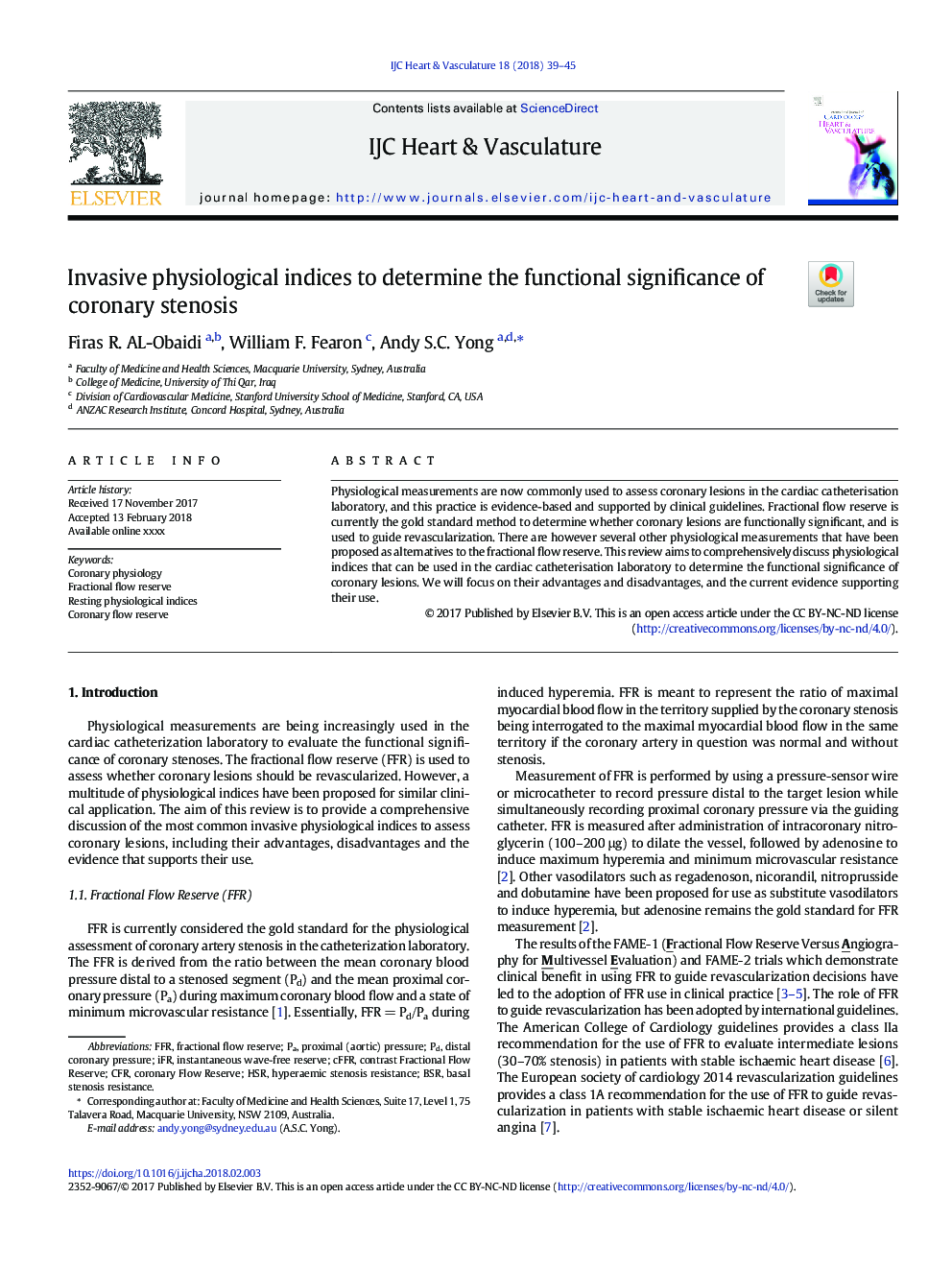| Article ID | Journal | Published Year | Pages | File Type |
|---|---|---|---|---|
| 8661204 | IJC Heart & Vasculature | 2018 | 7 Pages |
Abstract
Physiological measurements are now commonly used to assess coronary lesions in the cardiac catheterisation laboratory, and this practice is evidence-based and supported by clinical guidelines. Fractional flow reserve is currently the gold standard method to determine whether coronary lesions are functionally significant, and is used to guide revascularization. There are however several other physiological measurements that have been proposed as alternatives to the fractional flow reserve. This review aims to comprehensively discuss physiological indices that can be used in the cardiac catheterisation laboratory to determine the functional significance of coronary lesions. We will focus on their advantages and disadvantages, and the current evidence supporting their use.
Related Topics
Health Sciences
Medicine and Dentistry
Cardiology and Cardiovascular Medicine
Authors
Firas R. AL-Obaidi, William F. Fearon, Andy S.C. Yong,
